Parts of the rich history of Okinawa and the origination of the Sho Dynasty lie in Shuri City (a district of the capital city Naha) on the island of Okinawa.
Shuri Castle is rich in culture and history, even though it’s faced many tragedies in its distant and recent history.
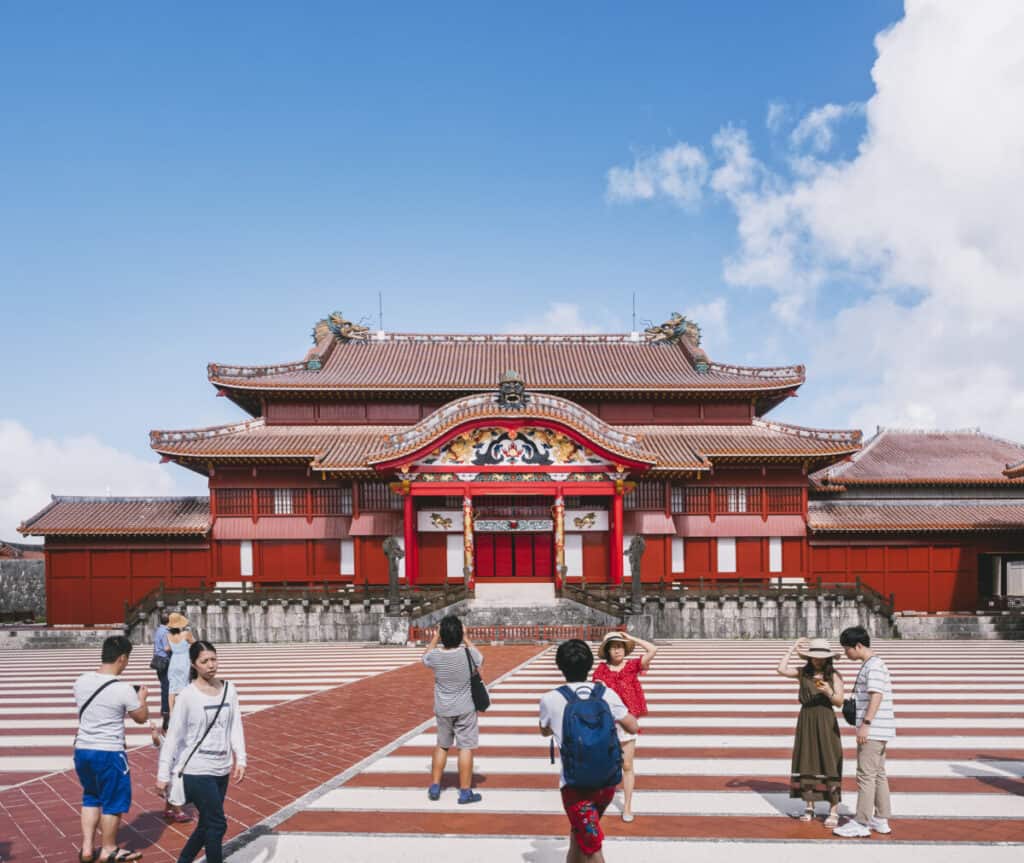
History of Shuri Castle
Shuri Castle was built by Shunbajunki, the second king of Chuzan. Shuri Castle was built in or around the 13th century, originally. It was built on top of a hill, to provide a wondrous and militarily advantageous view of Naha.
It was used as a castle, inhabited by the king, during the Sanzan period, likely built during the Gusuku period, which is when the other castles of Okinawa were built.
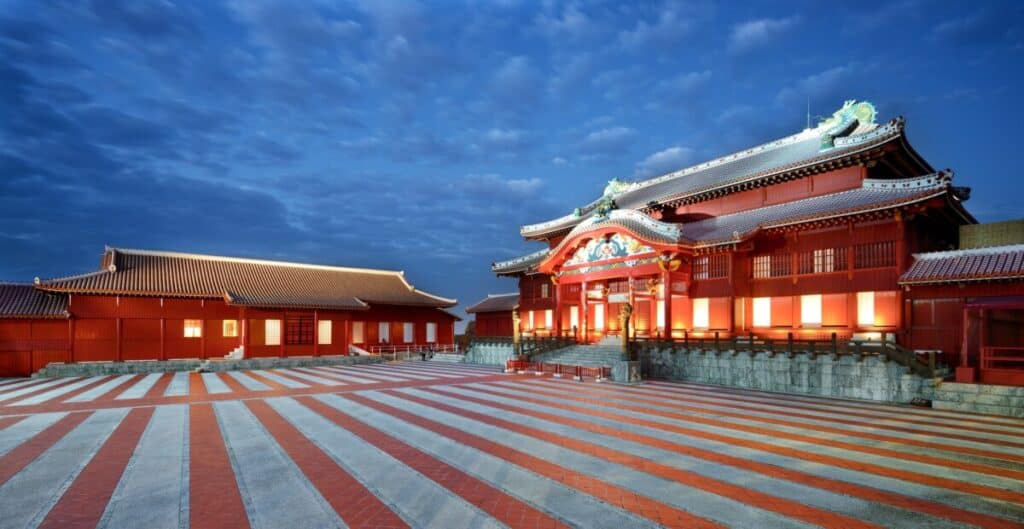
Unfortunately, the castle has been rebuilt multiple times due to some tragic happenings including war and fire.
Okinawa was ruled over by the Ryukyu Kingdom, the last domain of the Han system. The name Ryukyu means “glazed horn-dragon” in its descriptive Japanese meaning.
The former capital of the Ryukyu Kingdom was Shuri, and Shuri Castle served as the king’s residence for several centuries as well as an administrative center.
The castle played an important political role. It represented the unification of the island after Sho Hashi took the castle in his conquest. King Sho Hashi unified the principalities and established the Ryukyu Kingdom.
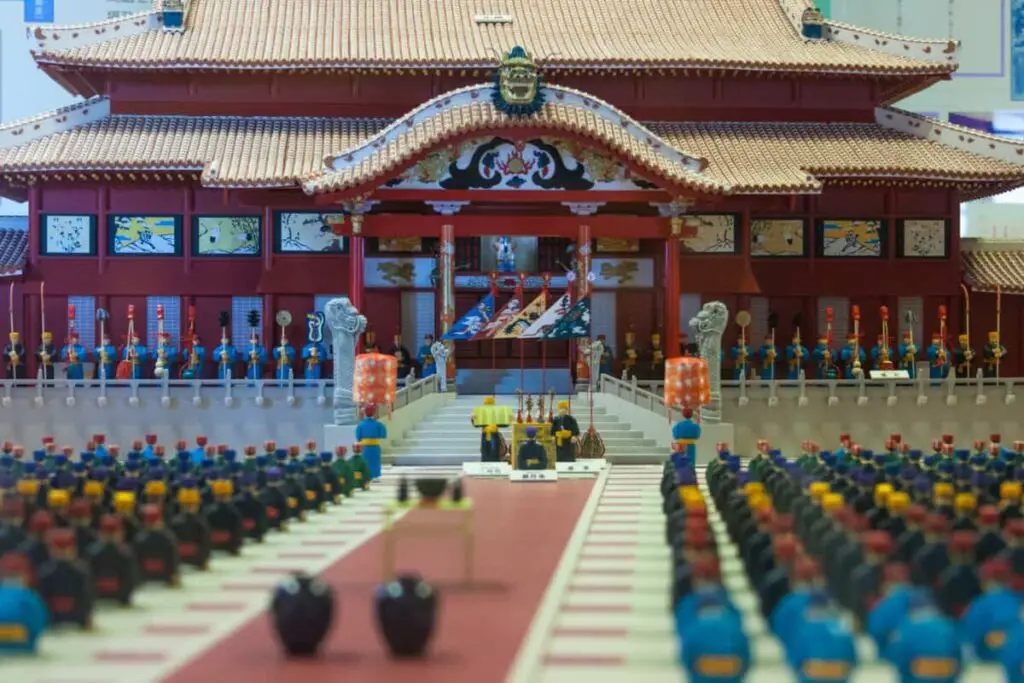
Sho Hashi, Conqueror and Ruler
Shuri Castle was the residence of Sho Hashi. Sho Hashi reigned from 1422 to 1439, born in 1372 and dying on June 1, 1439, at Shuri Castle. He united Chuzan, Hokuzan, and Nanzan by conquest, thereby ending the Sanzan period.
Sho Hashi viewed the capital city of Nakijin as a military threat, and he saw to the conquering of it. The chief of Hokuzan committed suicide after facing a fiery resistance.
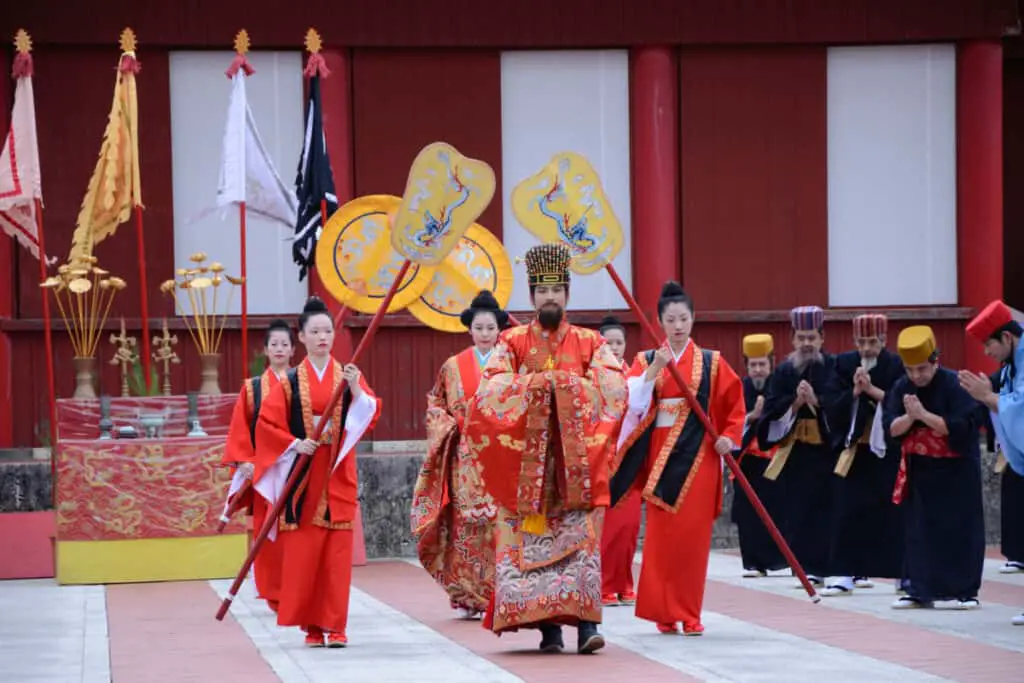
Sho Hashi was well-liked among his people and within his lands. He held a large approval from his contemporaries and therefore held significant political power.
He organized the lands, the administration of the lands, and fit them into better Chinese models and systems. He founded the Ryukyu Kingdom and the Sho Dynasty.
Hashi oversaw the expansion of Shuri Castle and its embellishment during his reign. He oversaw the placement of distance markers throughout Okinawa, marking the distance to Shuri Castle for travelers and visitors.
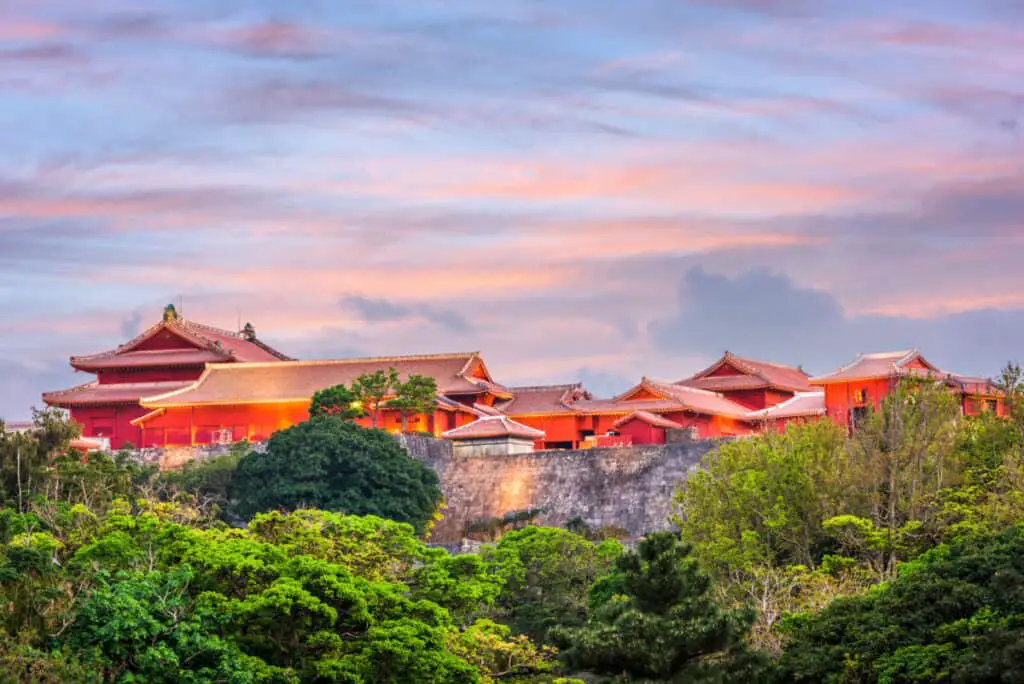
Hashi went on to request official recognition and received it from the Chinese imperial court.
The Chinese imperial court bestowed the name Shang, registered the new title King of Ryukyu, and sent a ceremonial dragon robe and lacquer tablet to Hashi. The lacquer tablet was placed on display on the Chuzan gate until the 20th century.
Shuri Castle Affairs
The main hall of Shuri, the Seiden was the venue of state affairs and ceremonies. It was lavishly decorated and described greatly as “fit for a king.”
Sho Hashi ordered a bell to be cast and installed at Shuri Castle, which survived mostly intact even after WWII and the battle of Okinawa.
This lavish decor found in Shuri Castle was likely possible because Sho Hashi expanded trade significantly, especially with China. He organized envoys to other countries in Asia as well.
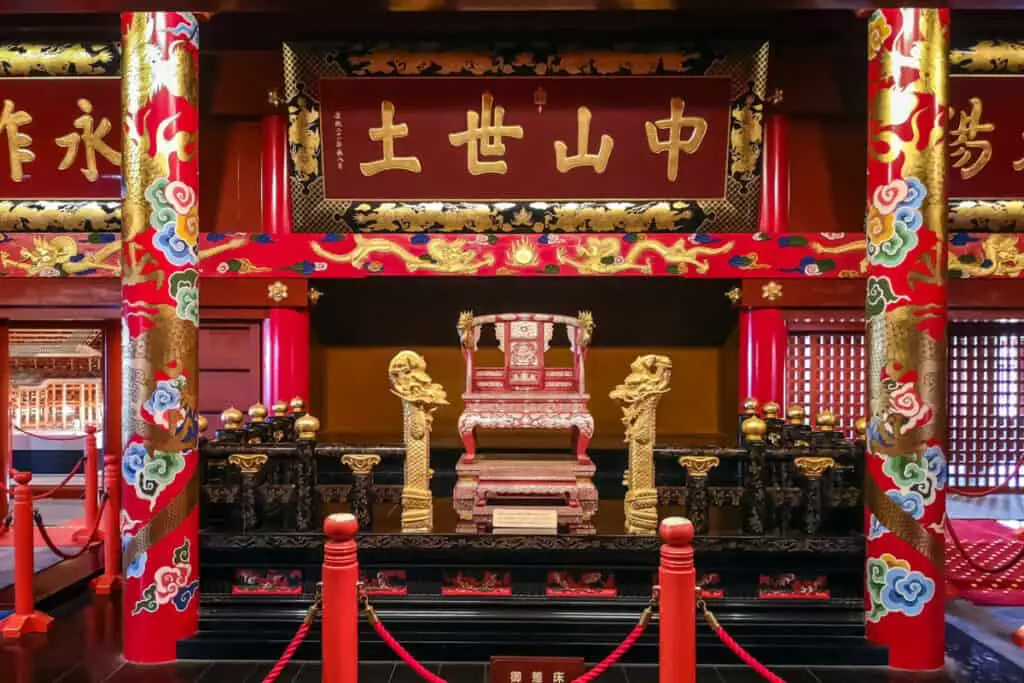
Shuri Castle was the royal court for the Ryukyu Kingdom for 450 years. It was a place of trade, economics, and culture.
The other halls, the Hokuden and Nanden, as well as the Hoshinmon (Hoshin Gate), were the surrounding structures, often used to welcome Chinese and mainland Japanese envoys.
Facing Fire
In 1945, the Battle of Okinawa almost destroyed the Shuri Castle completely. The Japanese held off the American troops in the Castle for a little over a month.
The American troops were given the command and the buildings and castle went up in flames, but the Japanese had made an escape days before. The American troops overtook the Castle, which was a political and psychological loss for the Japanese.
Shuri Castle has faced many hardships in the centuries that have passed since it was built. Some hardships were faced early on, and some in recent history. The Shuri Castle also burned in the years 1453, 1660, and 1709.
The Fire of 2019 and Silver Linings
In 2019, residents and tourists alike watched in despair while Shuri Castle burned down. The rest of the world also watched the live footage of the historical monument going up in flames.
It took more than 10 hours to put out the horrid flames. It began at 3 am and burned long through the morning and into the afternoon, finally extinguished around 1:30 pm.
Theories surrounded this fire, but the agency reported that the fire was caused by an electric system problem. The fire destroyed the central hall (Seiden), the south hall (Nanden), the north hall (Hokuden), and more smaller structures.
Although the Castle burned down, visitors can still see many of the attractions of Shuri Castle Park. Reconstruction is projected to be completed in 2026 and will be on display for the entire reconstruction.
Amid the destruction, some parts of the castle still survive. Hoshin-mon, the grand red gate that leads to the Una-central courtyard still stands.
It was surrounded by the flames that destroyed the three main buildings, but somehow escaped the ravages of the fire.
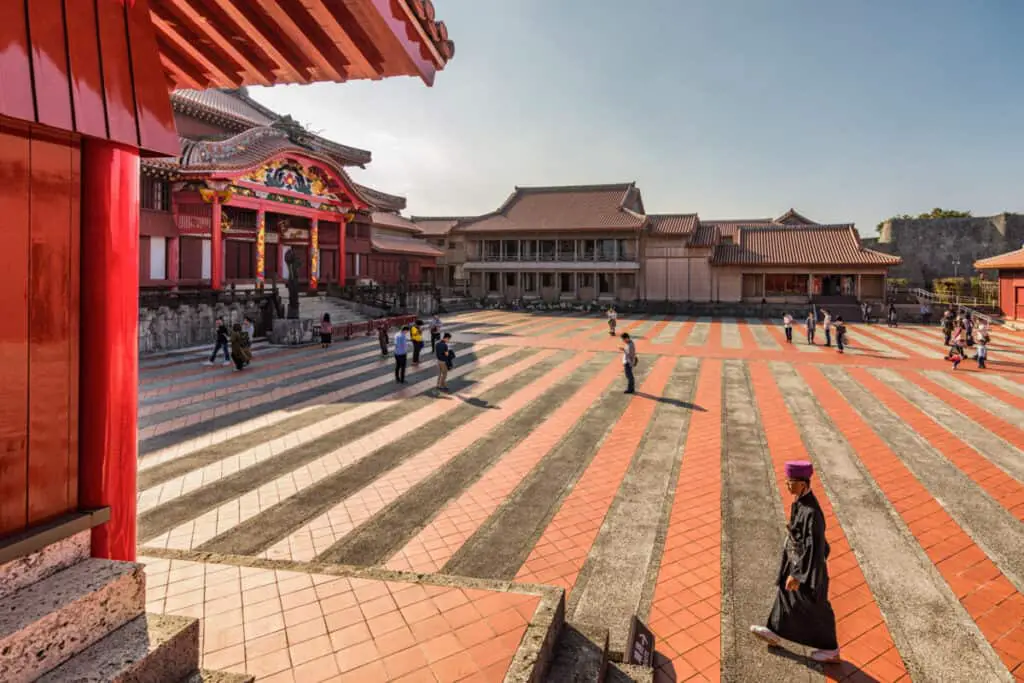
Since the most recent fire, archeologists have made the most of the destruction by studying the older foundations of Shuri Castle. This has given us insight into the earlier buildings, how they evolved, and evidence of the previous fires.
A total of 7 foundations have been discovered. These foundations have revealed a lot of information about how the Castle changed over time. Each reconstruction has changed the size, shape, and structure of the Castle.
The Royal Mausoleum still stands and remains open to visitors. Tamaudun (the mausoleum) lies below the gates so visitors would have paid homage to the royal ancestors before meeting the current ruler of the Ryukyu kingdom at the time.
Rising Again
Each time the Shuri Castle has been destroyed, it has taken on the spirit of a mighty mythical creature- the phoenix- rising from the ashes again and again.
The most recent ill fate of the castle was in October of 2019. Since then reconstruction has begun, money has been raised, and the castle is projected to be rebuilt and restored by 2026.
In the 2019 fire that blazed for well over 10 hours, 3 halls, and 5 more structures were destroyed. Although the destruction was thorough in some parts, other buildings and artifacts were salvageable.
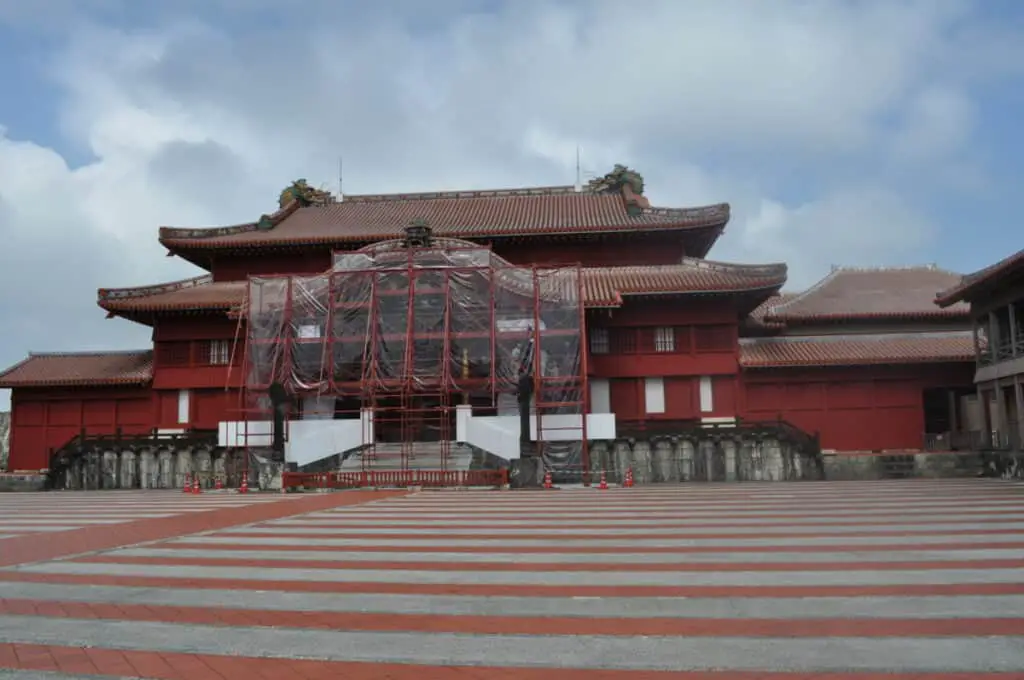
The mighty sandstone dragon pillars, standing 10 feet high and weighing over 1.5 tons, weren’t destroyed. However, they were exposed to extreme heat, which caused cracks.
The dragon pillars, once standing guard outside the Seidan are being repaired with resin, preserving the sacred statues so replicas may be made. These pillars are distinct and unique to Okinawa.
The red gate Hoshin-mon survived the destruction of the fire, although it was surrounded by the flames that destroyed the Seidan, Nanden, and Hokuden.
The red gate is open with limitations to visitors, allowing the visitor the opportunity to see the damage and the reconstruction of this once amazing structure.
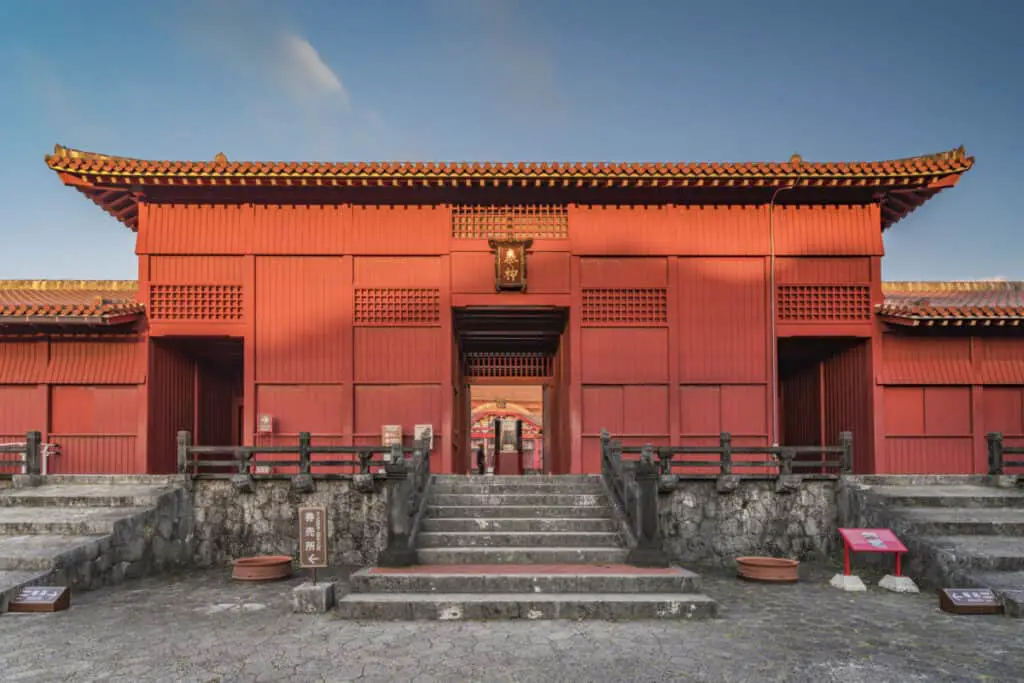
The upside to the most recent fire has been the ability to study the previous foundations, how the Castle may have been built, and how it evolved.
With the study of the previous ruins, it’s possible that the new reconstruction may be truer to the architecture that the Ryukyuan kings lived in.
During world war II, the battle of Okinawa all but destroyed the Shuri Castle, and after the war, it was repurposed as a university campus.
In 1992, the Castle was largely reconstructed based on the information available on the original site. Hopefully, with the most recent reconstruction, it will closely resemble the ancient Castle.
Visiting Shuri Castle
You can get to Shuri Castle via bus, or you can walk. The walk would take an average of 15-20 minutes from the nearest public transport. A car or bus ride would be about 5-10 minutes from the city of Naha.
Shuri Castle Location Via Google Maps
Shurei-mon Gate was built in the early 16th century by King Sho Sei. This gate was used for ceremonial entrances, a spectacular part of the complex.
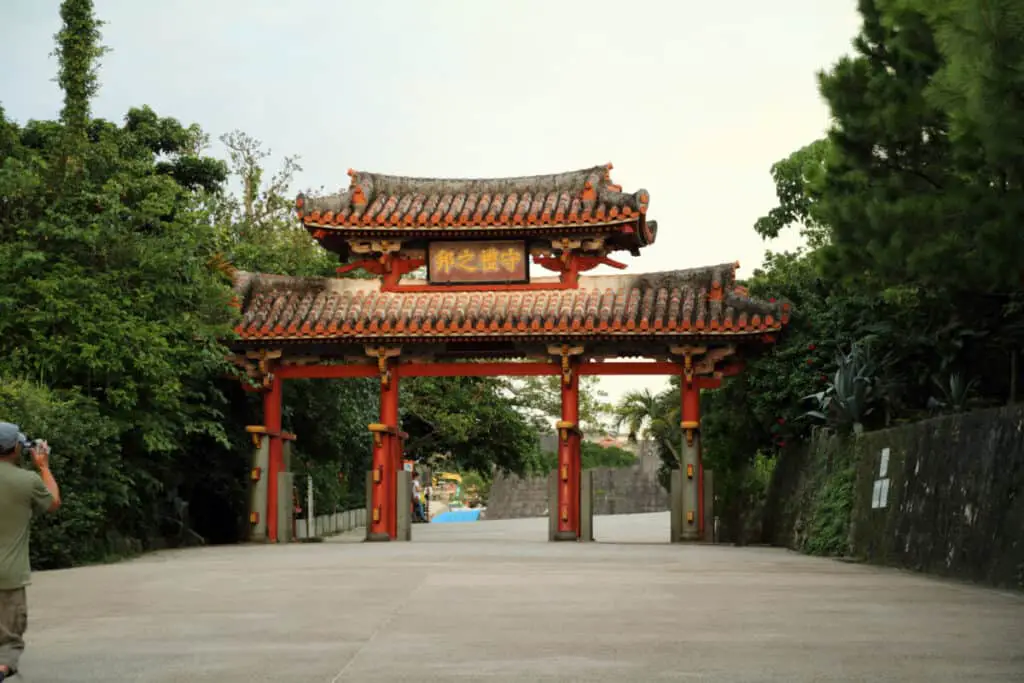
You’ll want to walk under this regal, 22 foot-high red-tiled roof. The gate has also suffered an ill fate, facing destruction multiple times since it was built.
If you visit the mausoleum, called Tamaudun, a small museum at the entrance will provide visitors with an overview of the site’s structure, information about the kings, and coffin replicas.
This museum is a great place to learn about the royal families, the kings, and some of the ancient burial traditions.
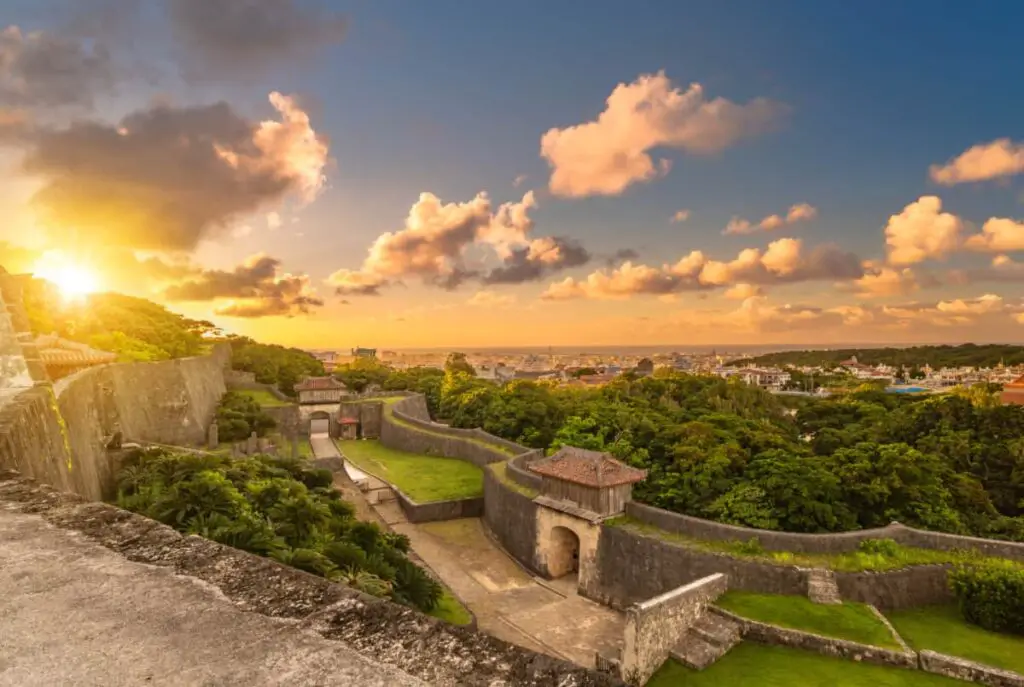
In the buildings that still stand, you’ll find a vast array of artifacts and informative exhibits that give you a scope into the history of the Castle and ancient Japan.
Okinawa Prefecture Official Website
Although fire has wrought destruction on this historical site time and time again, the power and regal energy still reside in this place, making it well worth a visit while exploring Okinawa.
Shuri Castle Virtual Tour
Hours
8:30 to 7 pm (until 6 pm from December to March, until 8 pm from July to September) admission ends 30 minutes before closing time
Closed Dates
Open 365 Days Per Year
Admission
400 yen










